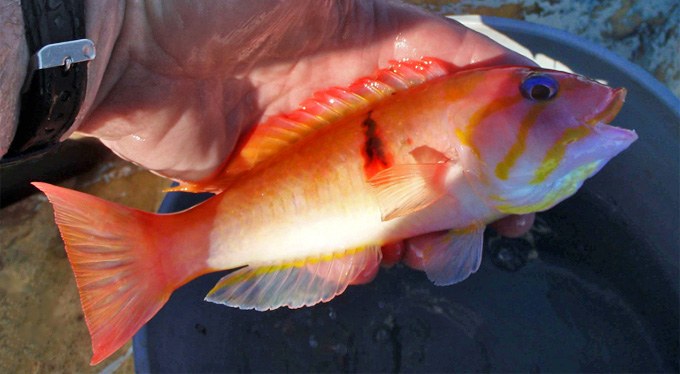Along with Passer Angels, Cortez Angels, Blue Spot Jawfishes, Limbaugh’s Chromis, and the the first-ever Splittail Bass (Hemanthias peruanus) we reported on in recent weeks, the Blackspot Wrasse (Decodon melasma) is set to make its aquarium debut in the near future.
There is no information available on captive care since this is a “first-ever” species for the trade. In the wild, D.melasma occurs in the deep reefs of the tropical Eastern Pacific. They are most commonly found over isolated rocky reefs adjacent to sand; This leads me to believe a sandy substrate may play a critical role in its captive care. The Blackspot Wrasse is a sequential, protogynous (female first) hermaphrodite like other Labridae. While no information is available for their social structure, most protogynous hermaphrodites form harems (for example: fairy wrasses, flasher wrasses, and anthias). D.melasma attains a maximum length of 32 cm (12 in), although most specimens that have been accidentally trawled up are less then 16 cm (6 in).
I realize it is difficult to appreciate the beauty of fishes when photographed out of water; The photos provided to Advanced Aquarist are of the actual collected specimens surfacing right after 2 days of decompression. We hope to bring you photos and possibly videos of these new species in captivity when they become available. But the only photo we have (and the only live specimen photo of this species I’m aware of) indicates a fish that will steal the spotlight in many aquariums.










0 Comments